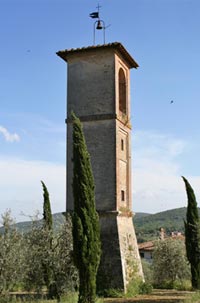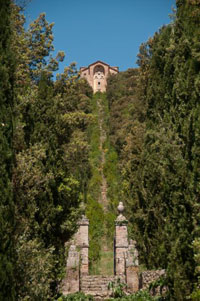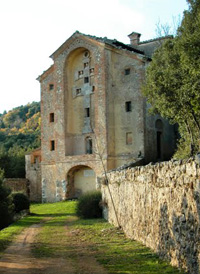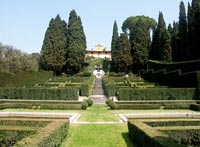Villa Cetinale |
| Villa Cetinale History |
||||
Cetinale was originally a farmhouse, built on ruins from an Etrurian settlement (XI/VIII century B.C.). Only at the end of the 19th century was it rediscovered by foreign visitors exploring the remote area of the Tuscan countryside. By then it had become one of the most appreciated Italian gardens. |
|
|||
| Cetinale, one of 70 gardens profiled by early 1900s author Edith Wharton was revisited by Vivian Russell for her book titled Edith Wharton’s Italian Gardens published in 1997. Some of the gardens had been bombed in two wars, while others were spoiled by tourism or neglect. Cetinale, featured on the cover of Russell’s book had been restored by Lord Lambton over the past 40 years.[1]
Garden visits are Monday to Friday 9.30 – 12.30 by appointment only. |
||||
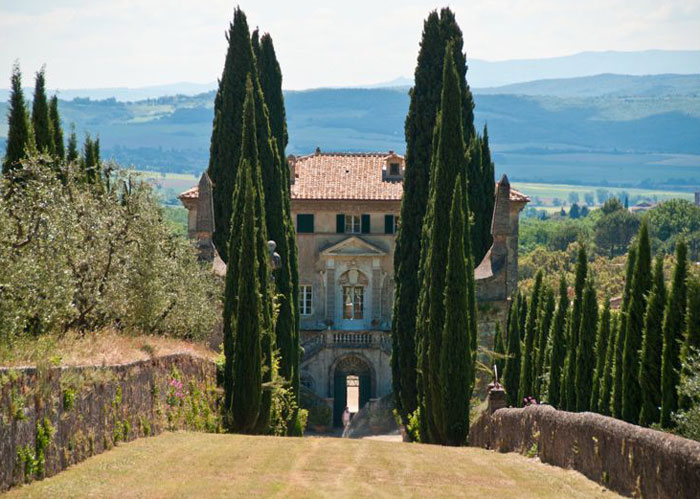 |
||||
| Ville Cetinale website | www.villacetinale.com Villa Cetinale | The Giardino all'italiana, Garden all'italiana or Italian garden Gardens in Tuscany | Italian villas and their gardens Walking in Tuscany | Southern Tuscany | Montalcino, Siena, Socicille, San Gimignano and the Val d'Elsa Azienda Turistica Pro Loco, Via Roma, 27 (53018) Sovicille (SI) | Web: www.prolocosovicille.it Villa Cetinale Directions
|
|
|||
 |
 |
 |
||
| Villa Cetinale | Parco Villa Cetinale
|
Villa Cetinale, Sovicille, vista dalla Scala Santa
|
||
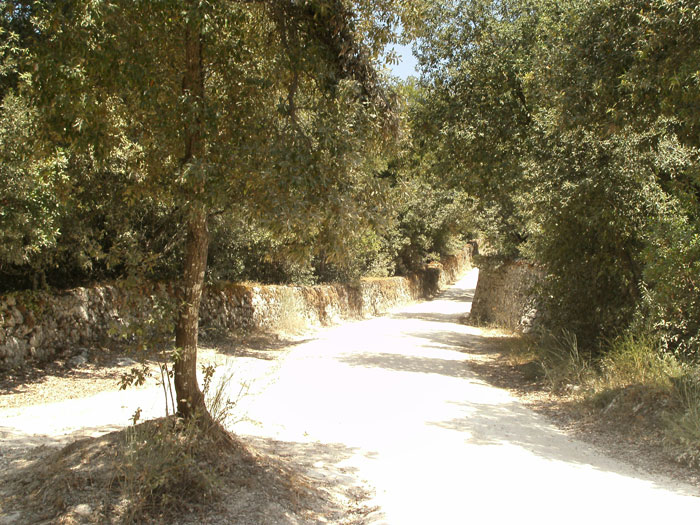 |
Road near Cetinale |
Cetinale was one of 70 gardens profiled by early 1900s American author Edith Wharton and featured again when Vivian Russell wrote a book entitled “Edith Wharton’s Italian Gardens” in 1997.
|
|
Enlarge map |
|
|
||||
| Podere Santa Pia | Villa I Tatti, near Settignano, outside Florence
|
Podere Santa Pia, view from the garden on the valley below |
||
One of the best places to slow travel in southern Tuscany is Podere Santa Pia. This holiday house is a peaceful retreat, perfect for relaxing with magnificent panoramic views of the mystical Maremma hills up to the Mediterranean Sea and Montecristo.
|
||||
 |
||||
|
||||
| Sovicille is located in the Val di Merse, an area of lush forest and mediaeval villages, and has played a remarkable role in the history of Republic of Siena. The village is located about 10 km west of Siena on the old via Maremmana, the road running from Sienna to the coast of the Maremma. Suavis locus ille, the pleasantness of the place, or Sub illice, - under the oaks, are the most probable origins of Sovicille, the name given to the ancient village facing the Montagnola Senese. Sovicille and its surrounding area are rich in abbeys and Romanesque parish churches. One of the main monuments of the Sovicille area is the Pieve di San Giovanni Battista a Ponte allo Spino (Parish Church Ponte allo Spino - dedicated to John the Baptist), located close to the remains of a gothic cloister, the Eremo di Santa Lucia (Hermitage of Rosia), the Villa Lechner, for Italian garden enthusiasts, there are the Villa di Celsa gardens and the Villa Cetinale gardens. About 35 km to the south west, is one of the most famous sights in Tuscany, the ruined Cisterician Abbey of San Galgano. There are several occupied and also ruined Augustinian monasteries in the area, most notably the Hermitage and Monastery of Lecceto. Last but not least is the River Merse, one of the most beautiful of this region, and the Farma stream, flowing through a very interesting natural area. |
||||
 |
||||
Sovicille’s territory stretches from La Montagnola Senese to the valley of the river Merse. Most of the itineraries around Sovicille are covered by the Carta Turistica (Turistic Maps) and by the Sentieri della Montagnola Senese 1:25000 (The Sienese Montagnola Paths) Club Alpino Italiano (CAI: Italian Alpine Club) Sezione di Siena (Multigraphic Edizioni, Firenze). Walking in Tuscany | Itineraries in the surrounding hills of Sovicille | Sovicille, Villa di Cetinale, Castle of Celsa, Cetina, Pieve di Pernina, Pieve di San Giusto a Balli, Abazia di Santa Mustiola, Stigliano and the Ponte della Pia Anello Sovicille | Sovicille – San Giusto – Villa Cetinale – Il romitorio di Cetinale - Pieve di Pernina – Ancaiano – Villa Celsa - 16 km (Italian) |
||||
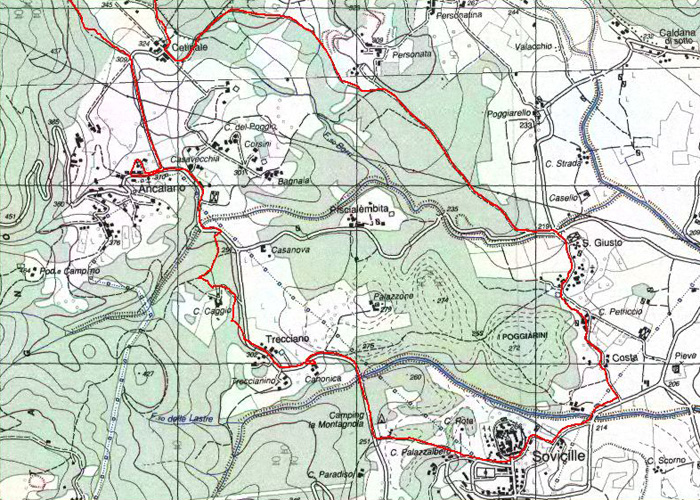 |
||||
[0] Photo by Sailko, licensed under the Creative Commons Attribution-Share Alike 3.0 Unported license.
|
||||
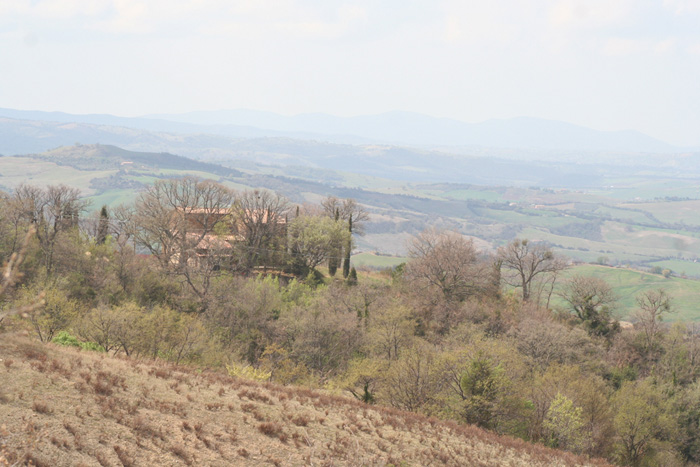 |
||||
Podere Santa Pia |
||||

